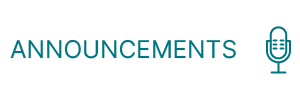This article is the second in a series of three that focus on essential practices of writing instruction. Built on the lessons learned from evidence submitted by schools and conversations with administrators, teachers and students, this series will promote thinking and provide resources to promote effective instructional practices to support student writing development.
By Teresa Rogers
teresa.rogers@education.ky.gov
During the past two years, literacy consultants serving on the Writing Program Review team at the Kentucky Department of Education had the opportunity to review hundreds of lesson plans and student writing examples submitted as evidence of student access to intentionally planned literacy learning opportunities across content areas. What emerged showed a wide range of understanding of literacy in the content areas.
Exactly what should writing in social studies look like? Does it have to be a polished piece ready for publication? What about the copious amounts of data students collect as part of their science experiment? Does interpreting charts and graphs count as literacy? If so, how do teachers support students to develop these skills?
These questions are not unique to Kentucky. Education researchers have begun to refine the concept of how content reading and writing differs from disciplinary literacy.
Past assertions of “all teachers are teachers of reading” and “reading across the content areas” have led to a plethora of generic strategies to help students read and comprehend a variety of texts. Generalized skills such as previewing a text, making predictions and summarizing the text’s main points are regularly taught in classrooms across the nation.
Similarly, “writing across the curriculum” has often led to a single, all-purpose writing process or format. As a result, literacy is often seen as a bully, demanding precious instructional time in unproductive activities that frustrate both teachers and students. Although useful to an extent, these practices have failed to produce the gains once promised.
A different term – disciplinary literacy – has been coined to describe the unique literacy practices of the disciplines. In other words, how do scientists, mathematicians, historians and students of literature engage with and produce the texts central to their fields of study? What counts as evidence? Research finds that students need explicit instruction in the specialized genres of each of these content areas.
In a 2008 article from Harvard Education Review called “Teaching Disciplinary Literacy to Adolescents: Rethinking Content-Area Literacy,” researchers Timothy Shanahan and Cynthia Shanahan use a pyramid to illustrate the increasing specialization of literacy skills.
Basic literacy forms the base of the pyramid and includes skills such as decoding and knowledge of high-frequency words that underlie virtually all reading skills. Most children master these during the primary grades.
Intermediate literacy skills are in the middle of the pyramid. As students progress through the upper elementary grades, they begin to acquire these skills, which are common to many tasks and include generic comprehension strategies, common word meanings and basic fluency. During these years, students develop the skills to decode multisyllabic words quickly and fluently, acquire a larger body of vocabulary and foster the metacognitive skills to monitor their own comprehension.
During middle and high school years, students should begin to develop disciplinary literacy skills. Represented by the top of the pyramid, these are practices specific to history, science, mathematics, literature or other subject matter. Students encounter increasingly complex content specific texts, requiring an understanding of how the disciplines create, disseminate and evaluate knowledge.
Moreover, Shanahan and Shanahan use this pyramid to illustrate the declining amount of instructional support students receive as they progress through school. For elementary students, basic literacy instruction constitutes a major part day. The literacy focus continues as students advance through the upper elementary grades, but by middle school, time allotted for the literacy block usually is distributed between other content areas.
Students encounter increasingly complex texts as they move into the middle grades, but the support often fades into a reiteration of general reading strategies or may disappear altogether. Teachers are left searching for strategies to make these texts accessible to all students.
Shanahan and Shanahan note that, “strong early reading skills do not automatically develop into more complex skills that enable students to deal with the specialized and sophisticated reading of literature, science, history and mathematics. Most students need explicit teaching of sophisticated genres, specialized language conventions, disciplinary norms of precision and accuracy, and higher-level interpretive processes.”
However, teachers often feel ill-equipped to tackle the task of disciplinary literacy. Content teachers who possess the disciplinary background often see literacy instruction as limited to the English language arts classroom. Conversely, because of the depth of content knowledge required, English teachers are not prepared to engage students in disciplinary conventions distinct to each field of study. So where do we begin to bridge this gap? How do we provide structures to allow for conversations and learning to occur across content areas?
Begin first by developing your own understanding of disciplinary literacy. Then, begin to encourage questions from colleagues. Listen to their description of how professionals use the literacies of their discipline in the real world.
As a literacy professional, share instructional routines, tools and strategies, but encourage others to refine these to meet the demands of their disciplines. Understand and empathize with their struggles as you support them through their learning process.
The following resources will be useful to deepen understanding of disciplinary literacy and offer instructional practices that support literacy development:
- What are Literacies within the Disciplines? This one-page graphic can act as a starting point for teachers to begin discussions about disciplinary literacy.
- Annenberg Learner: This free, self-paced, online professional learning will develop teacher understanding and authentic implementation of literacies across the disciplines. Explore the big ideas in literacy and then narrow the focus of your learning to reading and writing in science, mathematics, social studies or literature. Classroom videos and thought-provoking questions will build your understanding of the multiple literacies students use.
- “This is disciplinary literacy: reading, writing, thinking, and doing … content area by content area,” a book by ReLeah Cossett Lent, who has authored 10 books on education and has been published in numerous journals, including Educational Leadership, the Journal of Staff Development and NCTE’s English Journal. Lent spotlights the authentic use of reading, writing, inquiry and collaborative learning within content area classrooms. Discipline specific examples, along with frequently asked questions, provide insightful and relevant information for teachers.
- “Content Matters: A Disciplinary Literacy Approach to Improving Student Learning” by Stephanie M. McConachie and Anthony Petrosky: Content-specific chapters emphasize the unique thinking processes within each discipline and provide classroom examples and instructional considerations. The authors also provide information for school leaders working to build disciplinary literacy competencies among teachers.



Leave A Comment